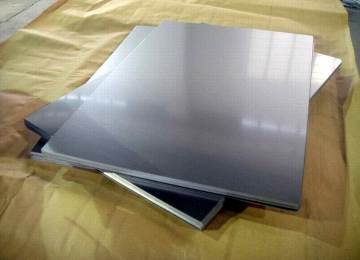
TA12 titanium alloy is a brand of titanium alloy, which belongs to the near α-type heat-strength titanium alloy. The composition of TA12 alloy includes the main element titanium (Ti) and other alloying elements, including 5.5% aluminum (Al), 4% tin (Sn), 2% zirconium (Zr), 1% molybdenum (Mo), 0.25 % silicon (Si) and 1% praseodymium (Nd). The addition of these alloying elements plays an important role in improving the comprehensive properties of TA12 alloy.
TA12 titanium alloy has good high-temperature performance and process plasticity, and is suitable for various processing processes, including pressure forming and mechanical processing. It is widely used in the aerospace field, especially in the manufacture of aero-engine parts, such as compressor discs, drums and blades. In addition, TA12 alloy can also be used to produce semi-finished products such as plates, bars, forgings and castings.
In general, TA12 titanium alloy is a titanium alloy material with excellent performance and wide application.
Chemical properties of TA12 titanium alloy
TA12 titanium alloy shows the following characteristics in terms of chemical properties:
1 Antioxidant properties:
Since the rare earth element neodymium is added to the TA12 alloy, it interacts with elements such as oxygen and tin in the alloy to form a neodymium-rich rare earth phase. This phase can hinder the movement of dislocations, refine the grains, and promote the selective oxidation and precipitation of compounds such as ZrO2 and SiO2 as well as the “pinning” effect of combining with the matrix. Therefore, the bonding ability between the oxide layer and the matrix of TA12 titanium alloy is improved, thereby improving the alloy’s resistance to high temperature and cyclic oxidation.
2 Corrosion resistance:
TA12 titanium alloy has good corrosion resistance. Titanium alloy itself has excellent corrosion resistance, and the addition of the rare earth element neodymium further improves the corrosion resistance of the alloy. TA12 titanium alloy can show high corrosion resistance in acidic, alkaline and salt water environments, and is suitable for various industrial fields with high corrosion resistance requirements.
Overall, TA12 titanium alloy has excellent characteristics in terms of oxidation resistance and corrosion resistance, making it an ideal material choice in many fields.
TA12 chemical composition (%)
Fe | C | Si | Mes | norte | Zr | Al | Sn | H | O | Nd | ti |
≦0.25 | ≦0.08 | 0.2-0.35 | 0.75-1.25 | ≦0.05 | 1.5-2.5 | 4.8-6 | 3.7-4.7 | ≦0.0125 | ≦0.15 | 0.6-1.2 | margin |
Heat treatment system of TA12 titanium alloy
These heat treatment methods are very important to improve the structure of the alloy, eliminate stress and improve material properties.
1) Double annealing: This method consists of two steps. First, keep it at 980℃ for 1-1.5 hours, then air cool. Next, hold at 600°C for 2 hours and then air-cool again. This system is commonly used for blade and rod processing.
2) Triple annealing: This method consists of three steps. First, keep it at 965℃ for 1-1.5 hours, then air cool. Then, keep it at 945°C for 1-1.5 hours and air-cool again. Finally, it was kept at 600°C for 4 hours and then air-cooled. This system is commonly used for the processing of disc and drum die forgings.
3) Stress relief annealing: This annealing method is used to remove stress in the material. Keep at 500-550℃ for 1-5 hours, then air cool or furnace cool.
For the first annealing, appropriate adjustments can be made within the range of 30-50°C below the transition temperature as needed.
The application of these heat treatment systems helps to improve the mechanical properties, corrosion resistance and high temperature resistance of TA12 titanium alloy, making it more suitable for high-demand applications such as aerospace and aerospace.
Smelting and casting process of TA12 titanium alloy
For the smelting and casting process of TA12 titanium alloy, ensuring high quality alloy is very critical. According to the information you provided, the alloy should be smelted in a vacuum consumable electrode arc furnace more than twice.
Vacuum consumable electrode arc furnace smelting is a smelting method carried out at high temperature. In this process, the alloy material is placed in a vacuum environment and heated by the consumable electrode arc to reach the melting point and melt. Through the use of vacuum environment, the absorption of impurities can be reduced and the purity and quality of the alloy can be improved.
Application overview and special requirements of TA12 titanium alloy
The alloy has been used in a variety of aerospace parts such as compressor disks, drums and blades.

